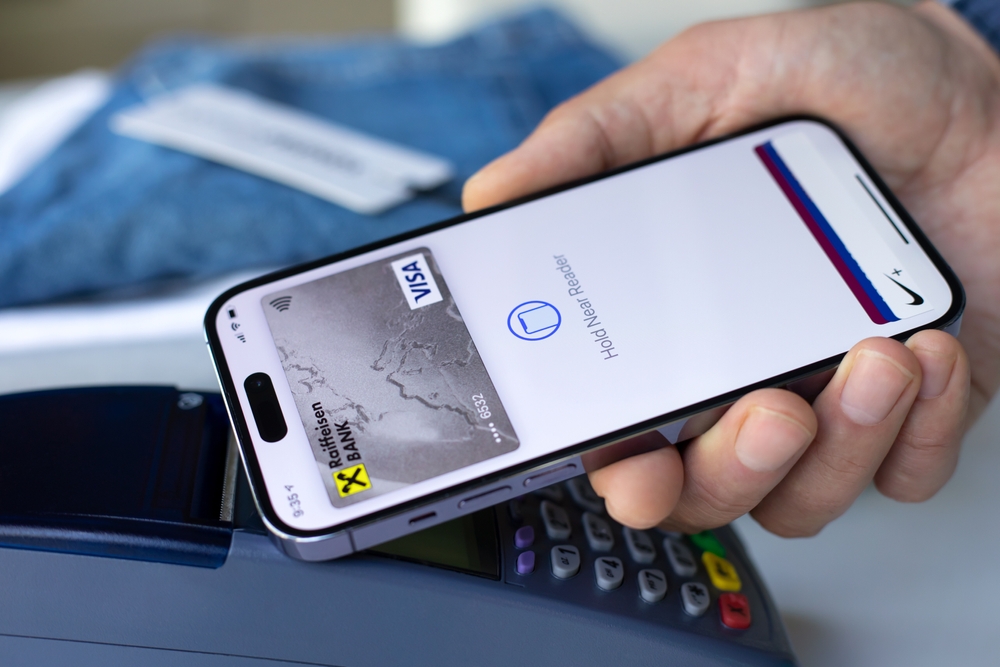Impulse spending can feel like a relentless cycle, often leaving you with buyer’s remorse and a strained wallet. It’s that irresistible lure of an unexpected sale or the thrill of an unplanned purchase that can derail your financial goals. But fear not, because breaking the cycle is entirely possible with a few strategic changes. Here are 15 savvy tricks to help you curb impulse spending for good, regain control of your finances, and make purchases that truly align with your needs and values.
1. Create a Budget and Learn How to Stick to It

A budget is your financial roadmap, guiding where your money should go rather than wondering where it went. Start by listing all income sources, then subtract non-negotiable expenses like rent, utilities, and groceries. What’s left over is your discretionary spending, which you can allocate toward savings, fun, or unexpected expenses. This approach transforms money from a stressor into a tool you can master.
Research by the National Foundation for Credit Counseling found that people who follow a budget report feeling more in control of their finances. Budgets reveal your spending habits in a way that’s both enlightening and empowering. Use apps like Mint or YNAB to automate tracking, making budgeting less of a chore and more a part of your routine. With a clear picture of your finances, impulse buys become less tempting because you know their true cost.
2. Identify Your Spending Triggers

Knowing your spending triggers is key to curbing those impulse buys. Triggers can be emotional, such as stress or boredom, or situational, like sales and social influences. By identifying what prompts your spending, you can develop strategies to avoid or counteract these urges. For example, if boredom leads to online shopping, plan alternative activities like a hobby or exercise.
Awareness is half the battle, as understanding your triggers puts you back in control. Keep a journal to track your impulses and note what you were doing or feeling at the time. Over time, patterns will emerge, and you’ll find it easier to address the root causes. This self-awareness transforms impulse buying from a subconscious behavior into a conscious choice.
3. Implement the 24-Hour Rule

The 24-hour rule is a simple but effective strategy to curb impulse spending. When you feel the urge to buy something, wait 24 hours before making a decision. This period allows emotions to settle and gives you time to evaluate whether the purchase is a need or a want. More often than not, the desire fades, saving you money and regret.
A study from Columbia University found that a cooling-off period can significantly reduce impulsive behavior by giving the rational brain time to take over. During this time, consider the item’s value and how it fits into your life and budget. You may also find that researching alternatives or reading reviews reduces the impulse to buy. This rule not only saves money but also helps build a habit of mindful spending.
4. Use Cash Instead of Cards

There’s something about parting with physical cash that makes spending feel more real and immediate, unlike swiping a card, which can feel abstract. Handing over cash forces you to recognize the transaction’s impact on your wallet. Start by allocating a weekly cash allowance for discretionary spending. Once it’s gone, it’s gone, forcing you to prioritize your purchases.
This tactile approach helps reinforce spending limits and fosters a better connection with your money. Studies show that people tend to spend less when using cash compared to cards. This is because cash transactions trigger a “pain of paying,” making you more conscious of your expenditures. Switching to cash can be a powerful deterrent against impulse buying.
5. Unsubscribe from Retail Emails

Retailers know how to create temptation with their carefully crafted promotional emails. These emails are designed to lure you in with limited-time offers that are hard to resist. Unsubscribing from these emails reduces exposure to unnecessary temptation, helping you stick to your financial goals. Consider using a separate email address for shopping, checking it only when you plan to make a purchase.
Behavioral economist Dan Ariely points out that reducing temptation is crucial for maintaining self-control. By eliminating these marketing distractions, you’re less likely to fall prey to impulse purchases. Without the constant barrage of deals and offers, you can focus on what you truly need rather than what marketers want you to buy. This small step can have a significant impact on your spending habits.
6. Set Specific Financial Goals

Having clear financial goals provides a compelling reason to resist impulse buys. Whether it’s saving for a vacation, a new gadget, or simply increasing your emergency fund, knowing what you’re working toward makes it easier to say no to unnecessary purchases. Break these goals down into smaller, manageable milestones to maintain motivation. Each step forward reinforces your commitment and provides a sense of accomplishment.
Creating a vision board or using apps to track progress can keep these goals front and center. Visualization helps maintain your resolve when temptation strikes. When you’re tempted to spend impulsively, consider how it might delay achieving your goals. This perspective shift can be incredibly motivating, reminding you of the bigger picture.
7. Spend Less and More Mindfully

Mindful spending means being fully aware of your purchasing decisions and their impact on your finances. It’s about questioning the necessity and value of each purchase, rather than buying on impulse. Before making a purchase, ask yourself if it aligns with your values and long-term goals. Consider the item’s utility, longevity, and whether it brings genuine joy or solves a genuine problem.
According to a study published in the Journal of Consumer Research, mindful shopping leads to more satisfying and fulfilling purchases, reducing the likelihood of regret. This conscious approach to spending helps you differentiate between genuine needs and fleeting desires. By making informed choices, you’ll find greater satisfaction in the items you purchase. Ultimately, mindful spending encourages a healthier relationship with money.
8. Shop with a List

A shopping list is your best friend when it comes to avoiding impulse purchases. Whether you’re at the grocery store or shopping online, stick to your list to avoid deviating into unnecessary buying. Creating a list requires planning, which helps you focus on what you truly need. This foresight reduces the chances of being swayed by in-store promotions or eye-catching displays.
The process of list-making also allows you to evaluate what you already have, minimizing duplicate buys. It keeps you organized and ensures you don’t forget essential items, which can lead to unplanned trips and additional spending. Having a list also instills discipline and keeps your shopping habits aligned with your budget. This simple practice is a powerful way to keep impulse spending in check.
9. Leave Your Wallet at Home

If you know you’re heading into a temptation-heavy setting, consider leaving your wallet at home. This might seem extreme, but it’s an effective way to prevent unplanned purchases. Without money or cards, browsing remains just that—browsing. Being unable to make a purchase forces you to reconsider the necessity of potential buys.
Of course, this strategy requires foresight and planning, especially if you need to make essential purchases. Use it in situations where window-shopping or recreational browsing is involved, like at malls or markets. This limitation can help reinforce self-control by minimizing the opportunity to spend impulsively. Eventually, the habit of thoughtful consideration over immediate gratification will grow stronger.
10. Start a No-Spend Day Routine

Designate one day a week as a no-spend day to practice restraint and rethink your spending habits. On this day, avoid all non-essential purchases, focusing instead on free activities and experiences. Use it as an opportunity to assess your needs and wants, and reflect on spending triggers. Over time, this practice can help recalibrate your mindset towards money and spending.
A no-spend day encourages creativity in how you spend your time, discovering new ways to enjoy life without financial cost. You’ll learn to appreciate what you already have and find happiness outside of consumerism. This habit can gradually expand into multiple days, further instilling the discipline to resist impulse buying. As you become aware of how often purchases are unnecessary, you’ll find it easier to stick to your financial plan.
11. Assess Your Shopping Motivation

Before making a purchase, pause and assess why you feel compelled to buy. Are you influenced by a sale, comparison to others, or a desire to cope with emotions like stress or boredom? Understanding your motivation can prevent you from buying unnecessarily and help align your spending with your values. This awareness fosters control, helping you identify true needs versus transient wants.
Taking a moment to examine your motivations can lead to more thoughtful spending. Each assessment is an opportunity to realign your financial habits with your long-term goals. This introspection helps build resilience against marketing tactics and the pressure to keep up with trends. As you grow more attuned to your motivations, you’ll find it easier to resist the pull of impulse spending.
12. Limit Social Media Influences

Social media can be a powerful influence on your spending habits, often encouraging impulse purchases through targeted ads and influencers. Limit your exposure by unfollowing brands and influencers that trigger spending urges. Consider spending less time on platforms that make you feel pressured to buy. Instead, curate your feed to focus on content that supports your financial goals.
This digital decluttering helps create an online environment that aligns with your values and priorities. By reducing exposure to consumer-driven content, you’re less likely to feel the need to spend impulsively. This practice not only supports better financial decisions but also fosters a healthier mental space. With fewer distractions, you can focus on what truly matters to you.
13. Live By a “One In, One Out” Rule

The “one in, one out” rule is a strategy to manage possessions and curb impulse buying. For every new item you bring into your home, you must remove an existing one. This rule forces you to consider whether you truly need or want something new, as it requires letting go of something you already have. It encourages intentional purchasing and helps maintain a balanced and clutter-free space.
This method also promotes mindfulness about your possessions and their role in your life. It can be particularly powerful for those who struggle with clutter or feel overwhelmed by their belongings. By practicing this rule, you’re more likely to buy items that hold genuine value and serve a purpose. Over time, it fosters a minimalist mindset, reducing the allure of impulse buys.
14. Reflect on Past Impulse Purchases

Taking time to reflect on past impulse purchases can be a powerful tool for future spending habits. Consider the items that brought regret and those that stood the test of time. Reflecting helps you learn from past mistakes and recognize patterns in buying behavior. This insight can guide you toward more thoughtful and deliberate purchases.
Documenting these reflections in a journal can serve as a reminder of why you wish to curb impulse spending in the first place. Revisiting these entries can reinforce your resolve when faced with temptation. Understanding the emotional or situational triggers behind past purchases equips you with strategies to avoid repeating them. This process not only improves financial habits but also enhances self-awareness and personal growth.
15. Reward Yourself Sensibly For Reaching Milestones

Celebrate your financial discipline by rewarding yourself for reaching savings milestones or sticking to your budget. These rewards don’t have to be extravagant; they can be simple treats or experiences that bring joy without breaking the bank. This positive reinforcement encourages continued adherence to your financial goals. It turns saving and budgeting from a chore into a rewarding experience.
The key is to plan these rewards in advance to avoid them becoming impulsive purchases themselves. Align your rewards with your interests and values to enhance satisfaction. This approach not only strengthens financial resolve but also instills a sense of achievement. As you associate financial discipline with positive outcomes, sticking to your goals becomes a natural habit.
This article is for informational purposes only and should not be construed as financial advice. Consult a financial professional before making investment or other financial decisions. The author and publisher make no warranties of any kind.








